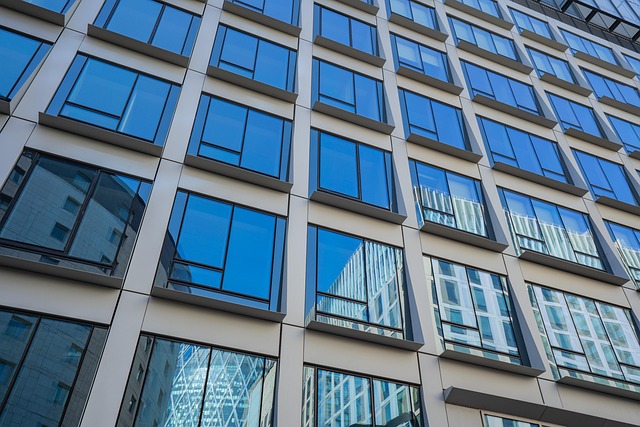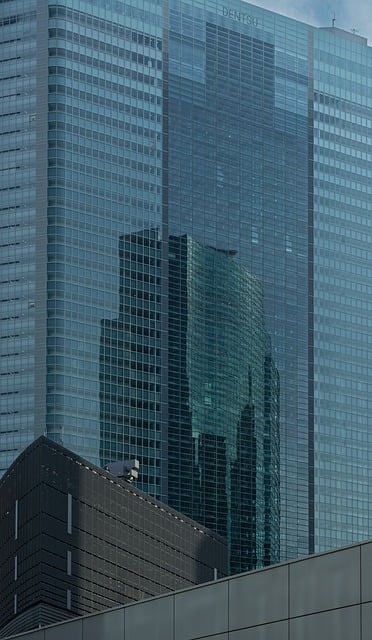Industrial destratification fans are vital for optimizing comfort and productivity in large spaces like factories and warehouses with high ceilings, addressing thermal stratification. By actively mixing air, they ensure uniform temperature distribution, reducing energy costs and enhancing worker satisfaction. Their strategic placement and regular maintenance maximize efficiency, making them a cost-effective solution compared to traditional cooling methods. Case studies show improved focus, efficiency, air quality, and productivity, as well as significant energy savings in various industrial settings.
Industrial destratification fans play a pivotal role in enhancing worker comfort and productivity. This article delves into the transformative power of these specialized ventilators, exploring how they counteract temperature stratification and improve overall workplace environment. We analyze the benefits, key features, optimal placement strategies, and present inspiring case studies showcasing real-world successes. By understanding industrial destratification fans, businesses can make informed decisions to revolutionize their work spaces.
- Understanding Industrial Destratification Fans and Their Role
- Benefits of Implementing Destratification Technology
- Key Features and Components of Effective Fans
- Strategies for Optimizing Fan Placement and Maintenance
- Case Studies: Real-World Success Stories of Improved Comfort and Productivity
Understanding Industrial Destratification Fans and Their Role

Industrial destratification fans play a pivotal role in enhancing worker comfort and productivity within industrial facilities, manufacturing plants, and warehouse applications. These specialized devices are designed to tackle a unique challenge faced by many factories: thermal stratification control. In high ceiling spaces, hot air tends to rise to the top, creating a comfortable environment for employees at eye level but leaving the areas below hotter and less hospitable.
Destratification fans actively circulate large volumes of air throughout these vast spaces, effectively mixing and redistributing temperature, ensuring uniform comfort across every corner. By breaking up thermal stratification, these fans not only improve worker comfort but also have a positive impact on energy cost reduction. This is particularly beneficial in heavy duty construction settings or factories with extensive floor plans, where efficient cooling can lead to significant savings while optimizing productivity.
Benefits of Implementing Destratification Technology

Implementing industrial destratification fans offers a multitude of benefits for various industrial facilities and manufacturing plants. By addressing thermal stratification control in large spaces, these powerful tools ensure uniform air circulation, enhancing worker comfort and productivity. In warehouse applications, factory cooling, or even heavy duty construction sites with high ceiling spaces, destratification technology plays a pivotal role.
This innovative approach significantly contributes to energy cost reduction by optimizing airflow distribution. Unlike traditional cooling methods, industrial destratification fans effectively combat the natural tendency of warm air to rise, creating an efficient and cost-effective solution for maintaining comfortable environments. This results in improved worker performance and satisfaction in both manufacturing plants and warehouse settings.
Key Features and Components of Effective Fans

Industrial destratification fans are designed to tackle a critical issue in large industrial facilities, manufacturing plants, and warehouses: thermal stratification control. These powerful machines are equipped with key features that ensure optimal air circulation in high ceiling spaces, where natural convection often falls short. They feature robust components built for heavy duty construction, enabling them to withstand the rigorous demands of factory environments.
The core functionality lies in their ability to disrupt vertical temperature gradients, effectively reducing thermal stratification. By efficiently mixing air throughout these vast spaces, industrial destratification fans facilitate even temperature distribution and improve air quality. This is particularly beneficial for warehouse applications where maintaining a comfortable environment for workers can significantly impact productivity. Additionally, the strategic use of these fans in manufacturing plants and heavy duty construction sites can lead to substantial energy cost reduction while enhancing worker comfort and overall efficiency.
Strategies for Optimizing Fan Placement and Maintenance

To optimize the impact of industrial destratification fans, strategic fan placement and regular maintenance are paramount. In industrial facilities and manufacturing plants, positioning fans in key areas with high thermal stratification is crucial for achieving effective factory cooling. Careful consideration should be given to the size and power of fans needed to penetrate and mix air throughout vast warehouse applications or heavy duty construction sites, ensuring every worker benefits from improved worker comfort improvement.
Regular maintenance schedules are essential for keeping destratification fans running at peak performance. This includes routine cleaning, checks for wear and tear, and replacement of worn parts. Such proactive measures not only extend the lifespan of the equipment but also contribute to energy cost reduction by ensuring optimal air circulation in large space air circulation—a critical factor in maintaining productivity during long shifts.
Case Studies: Real-World Success Stories of Improved Comfort and Productivity

In various industrial facilities, manufacturing plants, and warehouses across different sectors, real-world success stories have emerged thanks to the strategic implementation of industrial destratification fans. These powerful tools have not only improved worker comfort but also significantly boosted productivity levels. For instance, in a large factory with high ceiling spaces, the installation of destratification fans led to a notable reduction in thermal stratification control issues. By ensuring uniform air circulation across the entire space, workers experienced a significant decrease in discomfort, leading to increased focus and efficiency.
Another case study involves a heavy-duty construction site where excessive heat and poor air quality were hindering productivity. The introduction of industrial destratification fans not only provided much-needed cooling but also enhanced overall worker comfort. Additionally, the fans contributed to substantial energy cost reduction by minimizing the reliance on other cooling systems. This not only benefited the company’s bottom line but also fostered a safer and more productive environment for employees working in large space air circulation areas.
Industrial destratification fans play a pivotal role in enhancing worker comfort and productivity within industrial settings. By understanding their unique benefits, key features, and effective strategies for implementation and maintenance, businesses can optimize their environments to foster a happier, healthier, and more efficient workforce. The case studies presented highlight the tangible improvements that these fans bring, making them an essential tool for any forward-thinking organization aiming to revolutionize their workplace.






